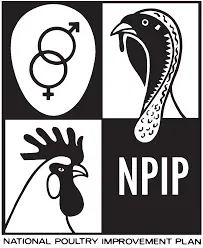Yellow Golden Pheasant _$125/pair
Eggs/live birds are ship USPS or locally pickup or arrange for ground delivery. Live birds Shipping fee is charged at a discounted rate -$100 for up to 4 birds Fertile eggs shipping fee -$15 We ship only in USPS approved shipping containers. We ship through USPS priority express mail. 1-2days estimated arrival time. Live guarantee on all shipment. We ship birds out weekly Mondays- Wednesdays. No shipping on public holidays. Tracking # will be email after the birds have been sent. Usually from 5-6pm the day of shipment
Palmfarmsteads
I would say yes ! Because it’s my hobby and I like it. God loves beauty and so do I. This golden pheasant or hong chicken is one of the ornamental chickens that is only enjoyed by the beauty of the color, not the sound. This chicken is very suitable to be placed in the yard, or in the garden to beautify the scenery. The rarity of this chicken is also widely used by zoos, mini zoos and recreational areas to attract visitors.
Can the Golden Pheasant fly?
The Yellow Golden Pheasant is not a good aviator. Like all families phasianidae which have short wings. They don’t fly like birds. However they can jump high while flapping their wings. That’s why you need a closed cage. The open roof of the cage can be covered with chicken net, strimin wire, or wiremesh.
A good cage for the cultivation of golden pheasant is a safe and comfortable cage. Although a 1.5 x 1.5 meter cage is sufficient for this pair of golden pheasants, you can’t expect them to breed well. Minimum cage 2 x 3 meters for several pairs of golden pheasant. With cage accessories that are made like in nature. Like trees to perch (perched) and shrubs to play.
They are also known to like to make holes in the cage. With their feet they scavenge the ground and may break into cages. Make sure your cage construction is safe from this.
When Does The Golden Pheasant Start to Reproduce?
The female pheasant bird enters the productive period faster than the male. Usually at the age of 1–1.5 years the female pheasant begins to lay eggs. Entering the breeding season in November to April (rainy season). Golden Pheasants can lay 10–15 eggs. Depending on the comfort of the cage, care and most importantly the “luck” factor.
Cultivating golden pheasant does require patience and high tenacity. Because the interval of production period is only once a year (seasonal). Unlike the ringneck pheasant whose production does not know the seasons.
How to take care of Pheasant Bird?
Maybe it’s not like you take care of a cat or a dog. Chickens are not very dependent on humans. Provide a proper, safe and comfortable cage. Provide good food with nutritional content that is appropriate for their age. And additional vitamins if needed.
The main food of the golden pheasant in captivity is voor (factory food). Various brands and various types of voor pheasant are sold in feed stores. Then which one is good for the golden pheasant? Golden pheasant chicks can be fed voor pheasant code “1” such as 511, AD1 and 591. Larger pheasants require different nutrients. Therefore pheasant feed manufacturers also provide a series that is suitable for each level of growth of chickens. AD2–4, 592–594 and so on are adjusted according to the age of the golden pheasant.
Additional foods such as brown rice, ground corn, green beans and other grains can be given to golden pheasant. Green vegetables such as mustard greens, sprouts, and kale are also good for them. Insects and caterpillars are the right addition of nutrients to the production process. In addition to increasing stamina, insects and caterpillars also maintain the golden pheasant’s immune system.
Are Golden Pheasants disease resistant?
The resistance of the golden pheasant has proven to be stubborn. They can live in both winter and summer. Both in the snow and in the desert. But back to the maintenance factor. A safe cage does not mean only safe from predators and ignorant hands. But also safe from disease.
Cage cleanliness should be a priority. Adequate sunlight and good air circulation are also very important. Damp cages should be avoided because they are usually a breeding ground for disease.
Probiotics and vitamins can be a solution when entering the transition season. Pheasant endurance usually drops when entering the changing seasons, and this must be considered. Give them their favorite food if their appetite starts to decrease.
Vaccines are a preventative measure. If you have a large cage with various types of pheasants in it, it is necessary to take preventive vaccinations. We do not recommend the golden pheasant to be mixed with other birds in the same cage. In addition to easily transmitting other poultry diseases can also harm the golden pheasant. A much smaller size compared to chickens in general makes the golden pheasant unable to defend itself if attacked.
Contact: (402)446-1788
Email: palmfarmsteads@gmail.com
www.palmfarmsteads.com
40510 J Rd Mancos, Colorado(CO), 81328
